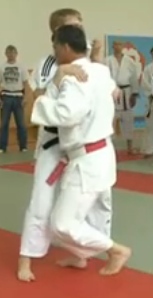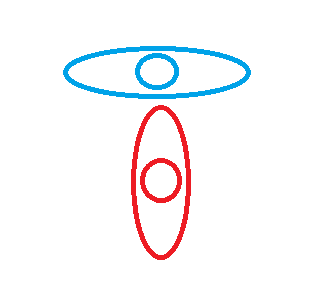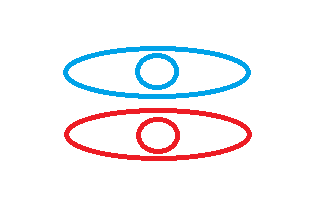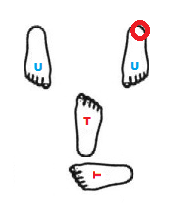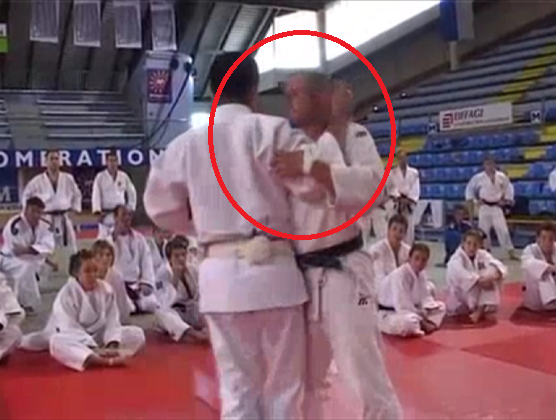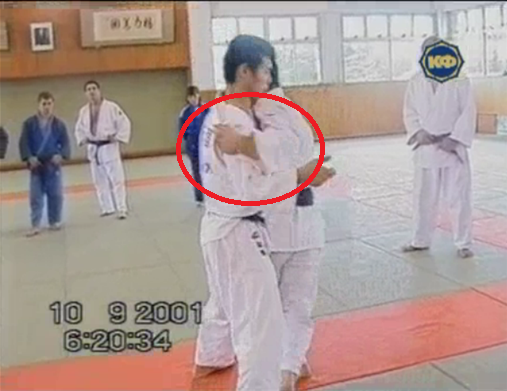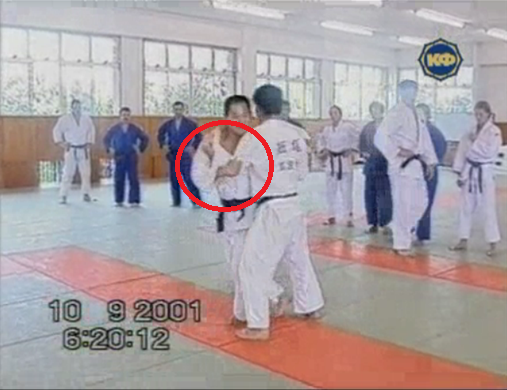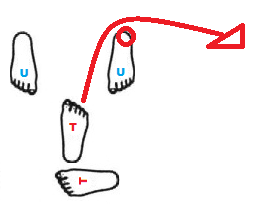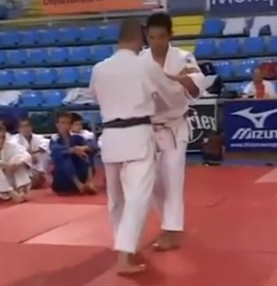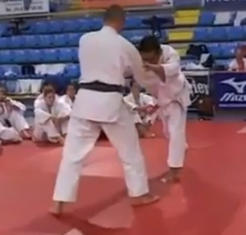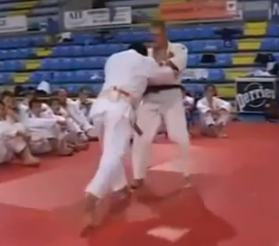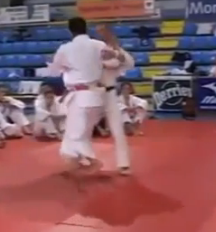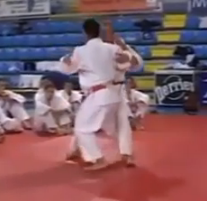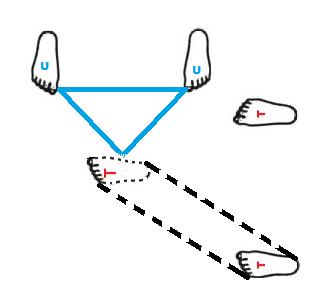After a few introduction articles, this one returns to a fuller in depth exploration of the throw.
As I only know how to do about 6 throws and I’ve already written about four of them this will be one of the last in depth articles, although I will continue the introduction articles until I have exhausted the Dai ikkyo and dai nikkyo.
I’ve opted for a slightly eclectic organisation for this article, I’ve started in the middle of the body and then moved outwards in a spiral, yeh I know sounds weird, but it will make sense once I stop waffling and star...
Body positioning
I’ve decided to start with body positioning for O uchi gari, because I believe that correct body positioning makes head positioning, hand action and use of the feet relatively straight forward whereas incorrect body positioning causes a whole host of problems throughout the rest of the throw.
Correct body positioning has two key components:
Having your COG lower than uke’s
Making chest to chest contact.
Body Positioning 1 – COG
Whenever practicing forward throws beginners are always instructed and reminded to ‘get under uke’ and ‘go low’, however, for some reason in O uchi gari this key piece of advice is rarely given, but is just as critical.
You must position yourself so that your COG is lower than uke’s, the best guide for this is – is you belt lower than uke’s.
As with forward throws a common mistake is to concentrate overly on lowering your COG below uke’s and not on striking the balance between lowering your COG and raising uke’s through off balancing them.
Here Yamashita demonstrates correct COG positioning for tori relative to uke in O uchi gari
Failing to properly lower your COG relative to uke is often combined with the second major error in body positioning for O uchi gari not making chest contact.
Body Positioning 2 – Chest to Chest contact
I have previously written at length about body positioningand chest contact for the Kari waza family, however, I believe it’s important enough to revisit.
As outlined in the linked article the most common error is coming in side on to uke, like so
Instead your should attempt to attack chest on chest and make contact, like so
Here Yamashita demonstrates correct chest to chest positioning for tori relative to uke in O uchi gari
Hand action
It is important to remember what the purpose of the hand action in O uchi gari is. The purpose is to break uke’s balance to the rear corner of the leg that is being reaped. So that uke’s weight is concentrated over their heel
There are two main hand actions for O uchi gari, for which the central difference is the action of the tsurite/lapel hand.
In the first action, which is generally considered the more canonical action tori’s tsurite forearm makes firm and sustained contact with uke’s chest and drives upwards keeping a straight wrist.
In the second action, which is equally valid, but often considered slightly non-canonical and is often not the expected version at grading and demonstrations etc... The tsurite action is upwards and over uke’s shoulder wrapping the gi around the upper arm.
For the hikite action, which remains constant regardless of the tsurite action, tori draws uke’s sleeve outwards and downwards towards his own hip.
Whichever combination of hand actions you choose it is vital that the hands must work together in concert.
Leg action
When performing the leg action for a canonical O uchi gari, it is vital that uke’s leg is reaped in a circle rather than lifted upwards from the mat.
Lifting uke’s leg up is less efficient as it is much easier for uke to retain their balance if their leg is merely lifted clear of the mat, than if it is drawn outwards away from their centre of gravity and out from under their hips.
Practicing O uchi gari
O uchi gari going forward
Katanishi advances with his left then suddenly decelerates allowing uke to continue retreating with his left despite Katanishi not advancing with his left.
He then advances with his right, cross stepping and placing it in front of uke’s right which is commencing its retreat.
Uke then continues his retreat whilst tori’s advanced right foot remains constant and tori’s trailing left foot accelerates to a position behind the right.
Tori then accelerates his advanced right foot to catch uke’s left foot as it is fully weighted.
Ippon
Seen from another angle
O uchi gari in a circle
Combinations
O uchi gari to Tai otoshi
O uchi gari to O soto gari
O uchi gari to Uchi mata
O uchi gari in Kenka yotsu
As I have discussed previously resolving the kenka yotsu situation usually requires T-ing up by missing the classical first step.
A classical T-ing up sequence
Whereas in a kenka yotsu T-ing up pattern the first step is missed.
In Competition
In competition O uchi gari can often look quite different to how it is performed in uchikomi and demonstrations.
This is not due to a flaw in the technique itself, rather to the difficulty of performing the technique canonically against a competent resisting opponent. Although you do see examples of it being performed canonically.
As a result O uchi gari often morphs into an Uchi mata esque technique. As demonstrated here in the infamous Resnick video.
And also in, oddly, far less controversial Inoue videos.

